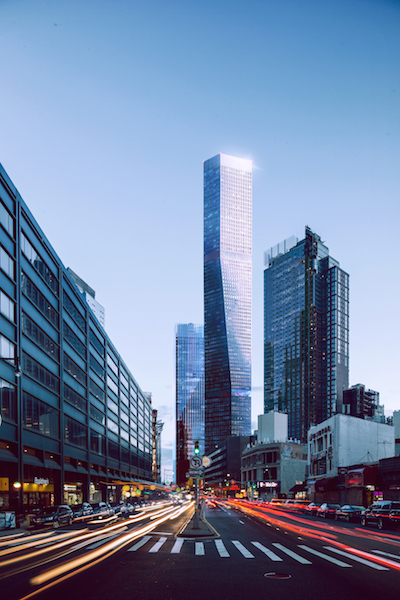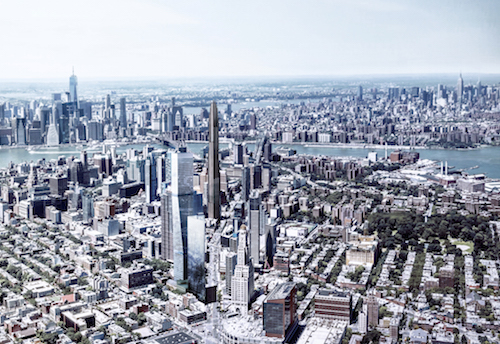The developer of 80 Flatbush, the controversial proposal for two highrise buildings adjacent to Atlantic Terminal in southern Downtown Brooklyn, seeks an equity officer to oversee fairness to the Downtown Brooklyn community throughout construction and beyond.
An equity officer would ensure diverse, local hiring for the two skyscrapers. One 38-story, 560-foot tower and a 74-story, 986-foot tower would be home to two public schools, 900 units of affordable and market-rate housing, a cultural institution, commercial office and retail space.

Through the equity officer position, developer Alloy aims to hear the concerns of the neighborhood throughout the building’s operation to make a sustainable, fruitful addition to the community. Alloy has partnered with property workers union 32BJ SEIU in order to bring well paying jobs with benefits to the building.
“A dedicated role will help us define, achieve, and monitor all of our MWLBE (Minority, Women, and Locally-owned Business Enterprises) goals,” said Alloy president AJ Pires. “We want to go beyond meeting basic criteria and ensure that we connect with individuals to make a difference in the community.”
The proposed project is getting some pushback from the brownstone community surrounding the commercial thoroughfare. The site is bounded by Flatbush Avenue, Schermerhorn Street, 3rd Avenue, and State Street. Residential State Street would serve as a loading zone for the construction, bringing further crowding to the already congested area.
“The community is overwhelmingly against it,” said Fort Greene resident and activist Ben Richardson. “A development like this would change the fabric of the community forever.”
Richardson noted quaint brownstones of just four stories line the street of the site and that going from four stories to 74 stories is not transitional.
There are a number of other tall highrises in the area, including One Hanson Place and several buildings in the BAM Cultural District.
Richardson stressed that the community is not opposed to development, but wants to see it happen in a responsible way that reflects the character and feel of the neighborhood. “It’s hard to make 74 stories feel in scale,” said Richardson.
Fort Greene resident and activist Lucy Koteen is concerned about whether 900 apartments and 200,000 square feet of office space can be filled. “Where is the evidence that they can fill all this market rate housing?” said Koteen. “Are we going to build these big towers and have them sit empty?”
Koteen called the Equity Officer position a “smokescreen,” that 80 Flatbush is still a proposal that must undergo approval, and that Alloy is attempting to appeal to the community. Alloy would need to get approved to build three times above the current building height zoning restriction.
But City Councilman Stephen Levin (D-Northern Brooklyn, Boerum Hill), who represents the area, noted that the historic building, which houses the Khalil Gibran International Academy sits on the proposed site, and would remain intact but undergo an upgrade.

“While there are brownstones across the street on State Street, at the same time you have a school there right now in a building that is not an appropriate building for a high school,” said Levin at a recent election-related debate. “It wasn’t an appropriate building for a high school six, seven, eight years ago and it’s not an appropriate building now because it’s a 120-year-old building.”
Richardson, who presented the concerns of the community to Alloy and community public officials Monday night, said Alloy is having an “ongoing dialogue with the community that they don’t need to have.” Alloy is making an effort to hear resident’s concerns, when it is certainly not necessary that they do so.
But Pires indictated his belief of the importance of letting the community in on discussions of the project.
“We have run a fairly unique and open community process to date having held over 85 meetings with local stakeholders,” said Pires. “We’re continuing to work with the community to address concerns related to parking/loading, contextual building design, materiality, and location of program.”






